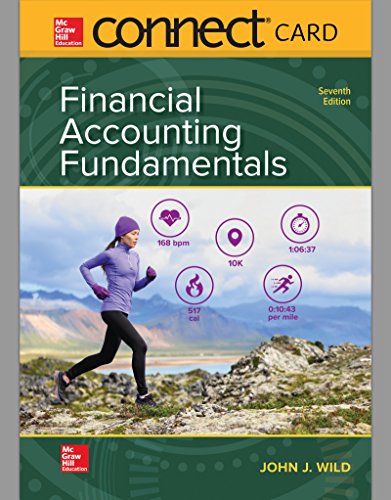
Prepare the
Explanation of Solution
Statement of cash flows: Statement of cash flows reports all the cash transactions which are responsible for inflow and outflow of cash and result of these transactions is reported as ending balance of cash at the end of reported period. Statement of cash flows includes the changes in cash balance due to operating, investing, and financing activities.
Cash flows from operating activities: Cash flows from operating activity represent the net cash flows from the general operation of the business by comparing the cash receipt and cash payments.
Direct method: The direct method uses the cash basis of accounting for the preparation of the statement of cash flows. It takes into account those revenues and expenses for which cash is either received or paid.
The below table shows the way of calculation of cash flows from operating activities using direct method:
| Cash flows from operating activities (Direct method) |
| Add: Cash receipts. |
| Cash receipt from customer |
| Less: Cash payments: |
| To supplier |
| Interest expense |
| For operating expenses |
| Income tax expenses |
| Net cash provided from or used by operating activities |
Table (1)
The cash flows from operating activities section for the year 2017:
| L Company | ||
| Statement of Cash Flows (partial)-Direct Method | ||
| For the Year Ended December 31, 2017 | ||
| Details | Amount ($) | Amount ($) |
| Cash flows from operating activities: | ||
| Receipts: | ||
| Collections from customers | 97,400 | |
| Total cash receipts | 97,400 | |
| Payments: | ||
| Cash payments to suppliers | (42,640) | |
| Cash payments for salaries | (17,820) | |
| Cash payments for rent | (9,040) | |
| Cash payments for insurance | (3,780) | |
| Cash payments for utilities | (2,740) | |
| Cash payments for interest | (3,600) | |
| Total cash payments | (79,620) | |
| Net cash provided by operating activities | $17,780 | |
Table (2)
Working notes:
The amount of cash receipts from customers.
Step 1: Calculate the change in
Step 2: The Calculate the amount of cash receipts from customers.
Calculate the cash payments to suppliers.
Step 1: Calculate the change in inventory.
Step 2: Calculate the change in accounts payable.
Step 3: Calculate the amount of cash payments to suppliers.
Calculate the amount of cash paid for salaries expenses:
Step 1: Calculate the change in salaries payable.
Step 2: Calculate the amount of cash paid for income taxes.
Calculate the amount of cash paid for rent expenses:
Step 1: Calculate the change in prepaid rent.
Step 2: Calculate the amount of cash paid for rent expenses.
Calculate the amount of cash paid for insurance expenses:
Step 1: Calculate the change in prepaid insurance.
Step 2: Calculate the amount of cash paid for insurance expenses.
Calculate the amount of cash paid for utilities expenses:
Step 1: Calculate the change in utilities payable.
Step 2: Calculate the amount of cash paid for utilities expense.
Want to see more full solutions like this?
Chapter 12 Solutions
Connect Access Card For Financial Accounting Fundamentals
- Summary: You will investigate a case of asset theft involving several fraudsters for this assignment. The case offers a chance to assess an organization's corporate governance, fraud prevention, and risk factors. Get ready: Moha Computer Services Limited Links to an external website: Finish the media activity. The scenario you need to finish the assignment is provided by this media activity. Directions: Make a four to five-page paper that covers the following topics. Management must be questioned by an auditor regarding the efficacy of internal controls and the potential for fraud. A number of warning signs point to the potential for fraud in this instance. List at least three red flags (risk factors for fraud) that apply to the Moha case. Sort them into three groups: opportunities, pressures/incentives, and (ethical) attitudes/justifications. Determine which people and organizations were impacted by Moha Computer Services Limited's enormous scam. Describe the fraud's financial and…arrow_forwardCoarrow_forwardCritically assess the role of the Conceptual Framework in financial reporting and its influence onaccounting theory and practice. Discuss how the qualitative characteristics outlined in theConceptual Framework enhance financial reporting and contribute to decision-usefulness. Provideexamples to support your analysis.arrow_forward
- Critically analyse the role of financial reporting in investment decision-making,emphasizing the qualitative characteristics that enhance the usefulness of financialstatements. Discuss how financial reporting influences both investor confidence andregulatory decisions, using relevant examples.arrow_forwardHelp need!!arrow_forwardAnswer please correarrow_forward
- Answer should be coarrow_forwardSolve quiarrow_forwardAssess the role of modern accounting theories in guiding research in accounting.Discuss how contemporary theories, such as stakeholder theory, legitimacy theory, andbehavioral accounting theory, shape research questions, hypotheses formulation, andempirical analysis.arrow_forward

 AccountingAccountingISBN:9781337272094Author:WARREN, Carl S., Reeve, James M., Duchac, Jonathan E.Publisher:Cengage Learning,
AccountingAccountingISBN:9781337272094Author:WARREN, Carl S., Reeve, James M., Duchac, Jonathan E.Publisher:Cengage Learning, Accounting Information SystemsAccountingISBN:9781337619202Author:Hall, James A.Publisher:Cengage Learning,
Accounting Information SystemsAccountingISBN:9781337619202Author:Hall, James A.Publisher:Cengage Learning, Horngren's Cost Accounting: A Managerial Emphasis...AccountingISBN:9780134475585Author:Srikant M. Datar, Madhav V. RajanPublisher:PEARSON
Horngren's Cost Accounting: A Managerial Emphasis...AccountingISBN:9780134475585Author:Srikant M. Datar, Madhav V. RajanPublisher:PEARSON Intermediate AccountingAccountingISBN:9781259722660Author:J. David Spiceland, Mark W. Nelson, Wayne M ThomasPublisher:McGraw-Hill Education
Intermediate AccountingAccountingISBN:9781259722660Author:J. David Spiceland, Mark W. Nelson, Wayne M ThomasPublisher:McGraw-Hill Education Financial and Managerial AccountingAccountingISBN:9781259726705Author:John J Wild, Ken W. Shaw, Barbara Chiappetta Fundamental Accounting PrinciplesPublisher:McGraw-Hill Education
Financial and Managerial AccountingAccountingISBN:9781259726705Author:John J Wild, Ken W. Shaw, Barbara Chiappetta Fundamental Accounting PrinciplesPublisher:McGraw-Hill Education





